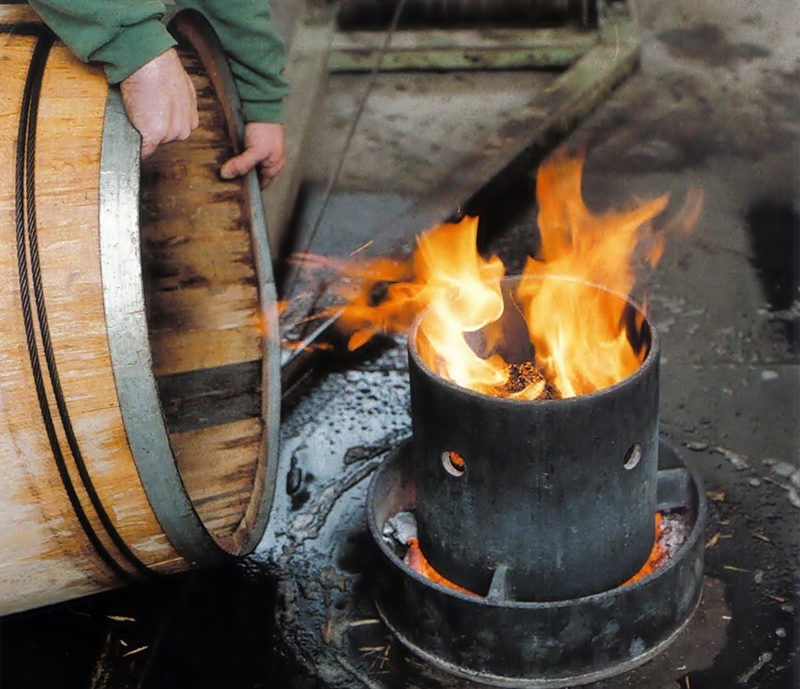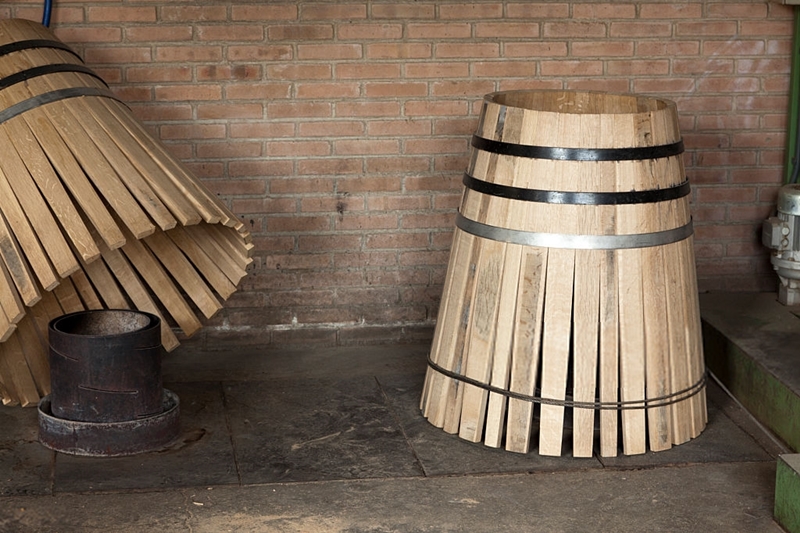
Stepping into the world of winemaking, we often marvel at the lush vineyards and the mystical process of fermentation that turns grapes into wine. But there's an equally fascinating, albeit less sung, hero in the story of wine creation: the humble oak barrel. The making of these barrels is an art form in itself, mastered by skilled craftsmen known as coopers. Today, let's take a journey through the meticulous process of barrel making, a craft that significantly contributes to the magic that is wine.
The journey begins in the forest, where the heart of the oak tree, known for its durability, impermeability, and rich tannin content, is selected. It's from this central part of the trunk that the staves, or narrow and long wooden planks, are carefully sawn. Given the high quality of wood required, the yield from each tree is relatively low, which explains the high cost associated with premium barrels.

Once the staves are cut, they're left to air dry, a process that can span several months to years, allowing the wood to season and reduce its inherent moisture content. This natural drying phase is crucial for enhancing the wood's qualities that will later influence the wine's character.
The next phase is both delicate and physically demanding. The coopers assemble the barrel by arranging the staves around a central fire or steam source. This heat treatment makes the wood more pliable, facilitating the shaping of the barrel. As the staves are gently heated, they're bent and fastened together using metal hoops, slowly taking the form of the iconic barrel.

A critical step in the process is the toasting of the barrel's interior, a procedure conducted over a carefully controlled flame. This toasting, ranging from light to heavy, breaks down the wood's carbohydrates, releasing a spectrum of flavors from vanilla to spicy notes, each contributing uniquely to the wine's final bouquet. The intensity of the toast is meticulously chosen based on the desired influence on the wine's aging process.
Once shaped and toasted, the barrel's interior is smoothed to remove any char or imperfection that might taint the wine. The edges are precisely trimmed to ensure a perfect fit, preventing leaks that could be disastrous for both the wine and the winery.

The barrel is then finalized by fitting the ends and securing the hoops, creating a vessel that's not only functional but also a work of art. Before it's deemed ready for the winery, the barrel undergoes a watertight test, often involving boiling water, to ensure it's free from leaks and impurities.
This labor-intensive process, rooted in tradition yet refined by generations of knowledge, results in barrels that do much more than just hold wine. They're an essential ingredient in the winemaking process, imparting complexity, depth, and character to the final product. The cooper's craft is a testament to the fact that great wine is not just about the grape but also about the vessel in which it matures.
As we savor our next glass of wine, let's toast to the coopers and their age-old craft, for without their skill and dedication, wine would not be the same.
Founded in 2007, Vinetur® is a registered trademark of VGSC S.L. with a long history in the wine industry.
VGSC, S.L. with VAT number B70255591 is a spanish company legally registered in the Commercial Register of the city of Santiago de Compostela, with registration number: Bulletin 181, Reference 356049 in Volume 13, Page 107, Section 6, Sheet 45028, Entry 2.
Email: [email protected]
Headquarters and offices located in Vilagarcia de Arousa, Spain.